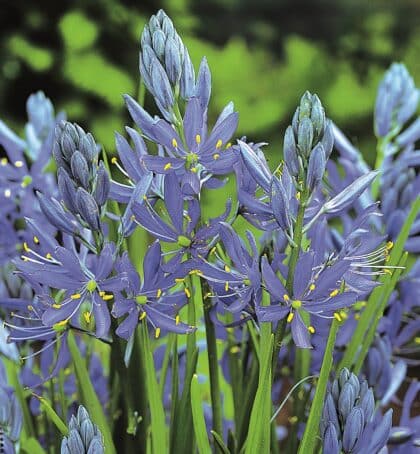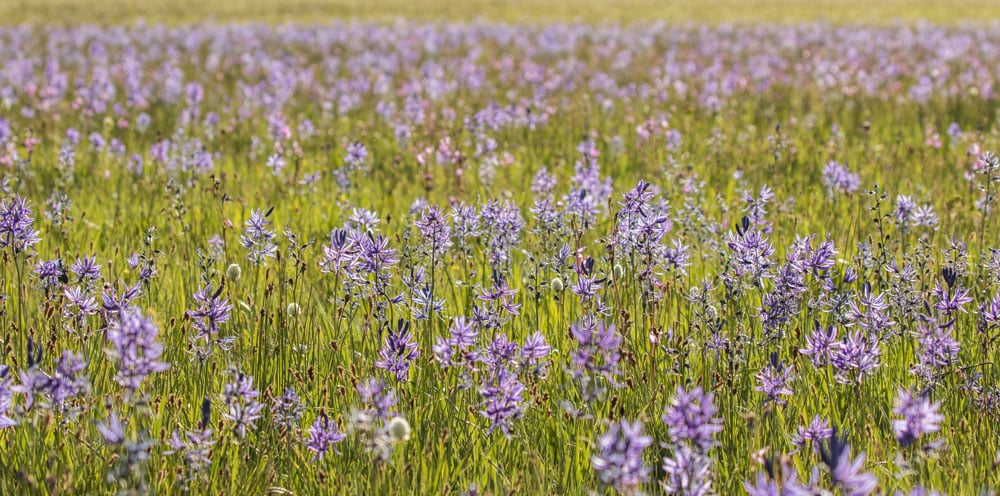
esculenta
Autumn
£8.60 for 20
£36.60 for 100

Discover the hidden charm of Camassia bulbs, an excellent addition to any British garden. Known for their splendid beauty and versatility, these bulbs will give your garden a captivating landscape that’s truly a feast for the eyes.
The Great Camas, scientifically known as Camassia leichtlinii, are a garden showstopper. Towering at 90 to 120 centimetres, this species showcases sturdy flower spikes adorned with numerous star-shaped blossoms in enchanting shades of blue or white. These late spring bloomers, perfect for the British climate, attract a variety of pollinators and their adaptability to diverse soil types makes them a must-have for any garden. Add them to your landscape for a touch of native elegance.
Meet the Quamash or Indian hyacinth (Camassia esculenta), a plant that lends a touch of softness to any garden landscape. With its ornamental value, Quamash is a popular choice for British gardeners. Its late spring blooms offer an attractive source of nectar for pollinators, further enhancing its appeal.
Camassia bulbs flourish in the British climate and soil:
Although resilient, protect your bulbs from slugs and snails when young shoots emerge in spring.